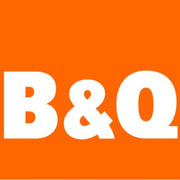Floor safety is one of the most important aspects of running a food facility. Whether you're managing a bakery, a meat processing plant, or a commercial kitchen, slippery surfaces create a serious risk to both staff and productivity. Food industries deal with a mix of spills, moisture, heating, and constant movement, which makes floor safety an everyday challenge rather than a once-in-a-while concern.
Keeping floors safe isn't just about reacting to hazards as they appear. It requires preventive steps, consistent maintenance, and the right surface materials. One of the most reliable ways to boost floor safety in high-risk environments is through GRP (Glass Reinforced Plastic) surfaces. These materials offer strong grip underfoot, even in damp or greasy conditions, helping food businesses run more safely and smoothly.
Why Anti-Slip Flooring Matters in Food Production
Slips and trips are a daily concern wherever food is being processed, cooked, or stored. All it takes is one spilled sauce or puddle near a cooling unit for someone to lose their footing. The floor surface ends up carrying much of the burden, often exposed to:
1. Grease from oils and cooking
2. Liquid from washing and cleaning processes
3. Meats, grains, or small food bits that don't get cleaned up right away
4. Frequent foot traffic that wears surfaces down over time
Any of these can make the floor slick and dangerous. Employees handling sharp tools or heavy equipment are especially at risk, and more injuries mean more downtime, medical costs, and possible health violations. Even outside of accidents, poor flooring can lead to lowered staff morale. If people are constantly watching their step or worried about falling, it slows down their work and adds stress to already demanding tasks.
By fitting out a floor to reduce the chance of slips, you're protecting everyone who walks through the space. It's just as important as having the right fire extinguishers or first aid supplies. When staff know the floor is dependable, they can focus on the job instead of their footing.
Why GRP Surfaces Work So Well for This
Glass Reinforced Plastic works a lot better than traditional tiles or concrete in areas where food is prepared or handled. The layered fibres combined with a textured top surface make it tough and slip-resistant, which is exactly what kitchens and food processing zones need.
Here’s how GRP stands out:
1. Long-lasting – GRP holds up against high use and doesn’t wear down as quickly as other flooring types.
2. Corrosion-resistant – It doesn’t rot, rust, or swell when exposed to water or chemicals.
3. Easy to clean – Although it’s textured for grip, it’s still simple enough to scrub down and sanitise thoroughly.
4. Strong under pressure – Whether you're rolling carts or dragging crates, GRP can take the weight without cracking or warping.
5. Helps with hygiene – Since it's tougher to damage, there are fewer gaps or broken sections where bacteria could hide.
6. Reduces repair costs – Because it lasts longer, fewer touch-ups and replacements are needed over the years.
Let’s say a manager in charge of a mid-sized canning facility decided to swap out worn linoleum strips in wet areas for GRP panels. Rather than constantly patching soft spots or mopping around dangerous corners, the team found they could get through each shift with fewer interruptions, just a quick rinse-down at the end of the day.
GRP flooring isn't decorative. It's practical, strong, and made for environments where reliability matters. If you're always dealing with floor treatments or anti-slip matting that wears out too soon, switching to GRP could save headaches in the long run.
Best Practices For Installing GRP Flooring In Food Facilities
Getting the best out of GRP flooring begins with a proper installation. The condition of the floor underneath, the fit of the GRP, and the choice of product all make a difference. It’s not a corners-cut type of job, especially when safety and efficiency are on the line.
Before fitting GRP flooring, the surface underneath should be clean, dry, and structurally sound. Loose material like dust, grease, or old adhesive needs to be removed so bonding can happen properly. Cracks or uneven spots should be fixed beforehand. Ignoring these steps can lead to movement underfoot, which means extra repairs later.
This work should always be done by professionals experienced in food environments. The mix of moisture, heavy use, and varied temperatures isn’t something to take lightly. A professional installer will assess the space and secure the material correctly using adhesives or mechanical fixings based on location and surface type.
Picking the right GRP format also matters. Each zone in the facility comes with different challenges and needs. For example:
- Ramped loading areas benefit from extra coarse grit finishes
- Washdown zones should have panels that allow water to drain away
- Corridors might use stair or plate-style treads
- Flat prep areas are usually best with full sheets for a continuous finish
Choosing the right GRP type for each setting makes the surface more effective and helps it last much longer.
Maintenance Matters More Than You Think
Once the GRP surface is in place, looking after it is surprisingly simple but still important. Even the best floor can wear down if grime builds up or cleaning is skipped. Grease and scale can bury themselves in the textured grip, making slips more likely.
A quick daily clean keeps most debris out. GRP handles pressure washing and food-safe cleaning products well. If the facility has multiple shifts in a day, adding a short mop or rinse between changes helps. Once a week, it's worth checking tricky areas like corners and spaces near drains where bits of food can build up.
Here’s what to watch out for:
- Edges lifting or corners peeling
- Chips or cracks, especially near machines
- Smooth spots where the grip has worn down
- Unusual colour changes that could signal chemical damage
Catching issues early helps avoid costly fixes later. In colder months, damp air and heating systems can shift how adhesives behave under the surface, so it’s smart to add a seasonal floor check. A spring inspection can reset good habits after winter and gear everyone up for the busier warmer seasons.
Keeping Floor Safety a Daily Habit
Long-term safety only works when it becomes part of daily routines. GRP flooring handles risks well, but habits are what keep things running smoothly.
Staff should get used to pointing out spills or flagging floors that don’t feel right underfoot. Even well-installed flooring can become slippery if coated with grime or left unchecked after shifts. Simple awareness training can show everyone how to spot early warning signs.
Team lead walk-throughs or short floor briefings during staff updates can help make checks part of the norm. It doesn’t need to be formal to be useful.
Managers play a key role here too. When leadership takes floor safety seriously, staff pick up the message fast. That kind of influence helps people take more care in how they clean, move around, or handle spot problems.
Creating a work culture where no one hesitates to slow down for safety can stop minor issues from turning into bigger ones. Over time, that saves energy, prevents injuries, and keeps the work environment steady, even during busy seasons.
Improve everyday safety in your facility with support from Slips Away. Our anti-slip GRP range is built to meet the challenges of food environments, offering strong grip, simple maintenance, and long-term reliability where it's needed most.














